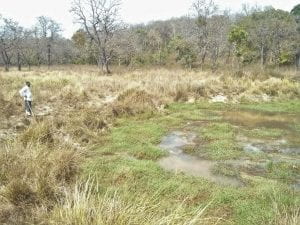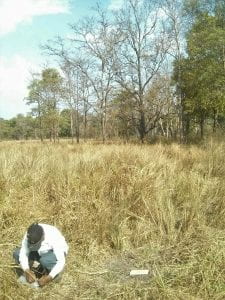Mudumalai
Studying historic land-use and land cover changes is important to model ecosystem responses to changing climate. In this direction, a global effort called Landcover6k is underway to understand land-cover change in the Holocene that is climate-induced, natural, and human-induced. In India, an ideal candidate for this project is the tropical dry forest of the Nilgiris Biosphere Reserve, a biodiversity ‘hotspot’ with a long history of human occupation. From seasonal wetlands of the Mudumalai Tiger Reserve, we are excavating pits to gain an evidence-based understanding of prehistoric climate-vegetation-people interrelationships. We will reconstruct, for the first time, past climates, fire and vegetation from sediments in this area using a combination of radiocarbon dating, stable isotopes, phytolith, charcoal and pollen analysis.




